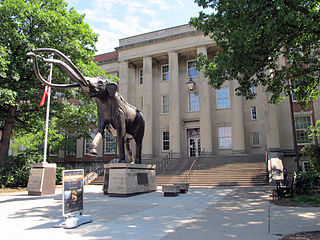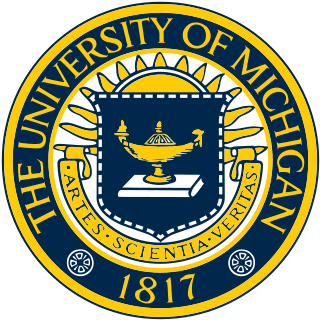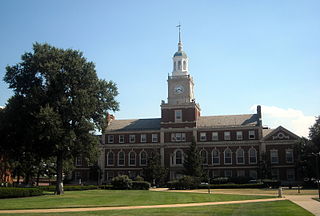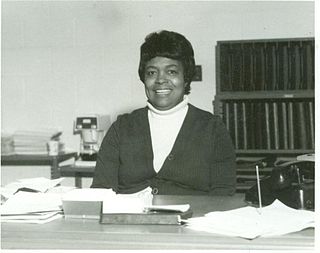
The University of Nebraska–Lincoln is a public land-grant research university in Lincoln, Nebraska, United States. Chartered in 1869 by the Nebraska Legislature as part of the Morrill Act of 1862, the school was the University of Nebraska until 1968, when it absorbed the Municipal University of Omaha to form the University of Nebraska system. It is the state's oldest university and the flagship institution of the state-wide system. The university has been governed by the Board of Regents since 1871, whose members are elected by district to six-year terms.

The Sheldon Museum of Art is an art museum in the city of Lincoln, in the state of Nebraska in the Midwestern United States. Its collection focuses on 19th- and 20th-century art.
The Great Plains Art Museum is a fine arts museum located in Lincoln, Nebraska that is dedicated to the arts of the Great Plains in the United States.

The University of Nebraska State Museum, also known as Morrill Hall, founded in 1871, is a natural history museum featuring Nebraska biodiversity, paleontology, and cultural diversity, located on the University of Nebraska–Lincoln City Campus near the corner of 14th and Vine Streets in Lincoln, Nebraska, United States. The museum houses Mueller Planetarium, a hands-on science discovery center, and the Elephant Hall, where visitors can see the world's largest articulated fossil mammoth among the collection of fossil elephants. Also featured are interactive paleontology exhibits, a dinosaur gallery, ancient life and evolution exhibits, wildlife dioramas, gems and minerals, American Indian and African exhibits, and a temporary exhibit gallery featuring rotating displays on diverse topics including photography, quilts and fine arts.

The Cornell University Library is the library system of Cornell University. As of 2014, it holds over eight million printed volumes and over a million ebooks. More than 90 percent of its current 120,000 periodical titles are available online. It has 8.5 million microfilms and microfiches, more than 71,000 cubic feet (2,000 m3) of manuscripts, and close to 500,000 other materials, including motion pictures, DVDs, sound recordings, and computer files, extensive digital resources, and the University Archives. It is the sixteenth largest library in North America, ranked by number of volumes held. It is also the thirteenth largest research library in the U.S. by both titles and volumes held.
Lentz is a Germanic surname.

The University of Michigan Library is the academic library system of the University of Michigan. The university's 38 constituent and affiliated libraries together make it the second largest research library by number of volumes in the United States.

Lincoln High School is a public secondary school located in Lincoln, Nebraska, United States. A part of the Lincoln Public Schools school district, it is the largest high school in the city. More than 40,000 students have graduated from Lincoln High in its 153-year history. The school colors are red and black, and the mascot is the Links. Its mascot is memorialized in a statue on the school's front lawn, gifted by the class of 1970, with four individual links chained together. These represent the hopeful characteristics of Lincoln High School: tradition, diversity, excellence, and unity.

The Moorland–Spingarn Research Center (MSRC) in Washington, D.C., is located on the campus of Howard University on the first and ground floors of Founders Library. The MSRC is recognized as one of the world's largest and most comprehensive repositories for the documentation of the history and culture of people of African descent in Africa, the Americas, and other parts of the world. As one of Howard University's major research facilities, the MSRC collects, preserves, organizes and makes available for research a wide range of resources chronicling the Black experience. Thus, it maintains a tradition of service which dates to the formative years of Howard University, when materials related to Africa and African Americans were first acquired.

The International Quilt Museum at the University of Nebraska–Lincoln in Lincoln, Nebraska is the home of the largest known public collection of quilts in the world. Also known as Quilt House, the current facility opened in 2008.

The Great Plains Black History Museum currently resides on the first floor of the historic Jewell Building in North Omaha, Nebraska. It was formerly located at 2213 Lake Street in the Near North Side neighborhood in North Omaha. It was housed in the Webster Telephone Exchange Building, which is listed on the National Register of Historic Places. A nationally renowned institution for more than 40 years, the museum includes more than 100,000 periodicals, manuscripts, photographs and research materials. The museum currently conducts programs and presents exhibits throughout Omaha, the State of Nebraska, regionally and nationally upon request.

Bertha Calloway was an African-American community activist and historian in North Omaha, Nebraska. The founder of the Negro History Society and the Great Plains Black History Museum, Calloway won awards from several organizations for her activism in the community and Nebraska. "I Love Black History" was the former website for the Bertha W. Calloway Center for the Research and Study of African and African-American History, Art, and Culture and the Great Plains Black History Museum before it.
Margaret Davis Jacob. b. Jan. 31, 1963) is an American historian. She is the Chancellor's Professor of History and Charles Mach Professor at the University of Nebraska–Lincoln.

Museum anthropology is a domain of scholarship and professional practice in the discipline of anthropology.

D-Scribe Digital Publishing is an open access electronic publishing program of the University Library System (ULS) of the University of Pittsburgh. It comprises over 100 thematic collections that together contain over 100,000 digital objects. This content, most of which is available through open access, includes both digitized versions of materials from the collections of the University of Pittsburgh and other local institutions as well as original 'born-electronic' content actively contributed by scholars worldwide. D-Scribe includes such items as photographs, maps, books, journal articles, dissertations, government documents, and technical reports, along with over 745 previously out-of-print titles published by the University of Pittsburgh Press. The digital publishing efforts of the University Library System began in 1998 and have won praise for their innovation from the leadership at the Association of Research Libraries and peer institutions.
Michael Francis James is an American artist, educator, author, and lecturer. He is best known as a leader of the art quilt movement that began in the 1970s. He currently lives and maintains a studio in Lincoln, Nebraska.

Wanda Ewing (1970–2013) was an artist born in Omaha, Nebraska. She considered her art to be "provocative with a political edge." A common message of her art was “I’m a proud black woman, and I’

Lincoln, Nebraska is the home of the state capitol of Nebraska, the University of Nebraska and has history dating back to the mid 1800s. A list of tourist attractions that can be found within the city are as follows.

Dykes & Gorgons was a lesbian feminist and lesbian-separatist magazine founded in 1973 in Berkeley, California. Its publication ended in 1976.















